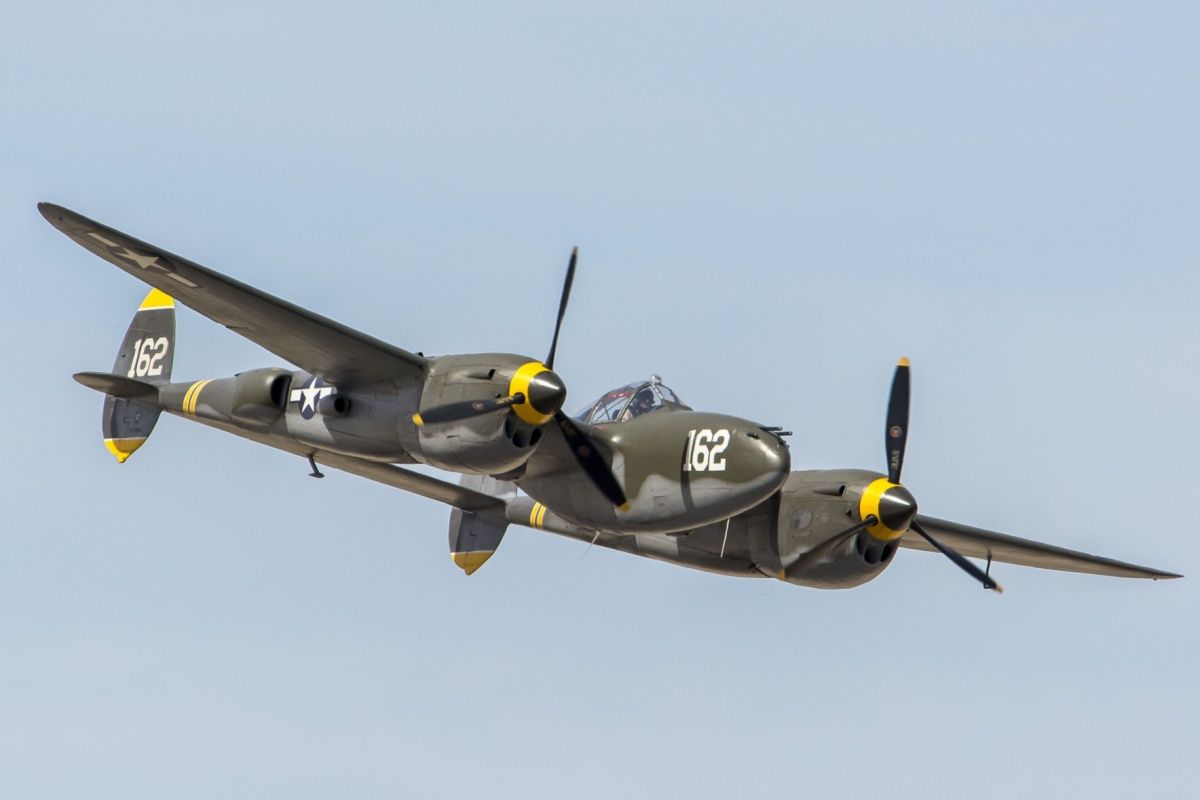Summary P-47 Thunderbolt was a versatile high altitude and ground attack fighter with 15,600 units built, claimed 4,000 enemy aircraft. De Havilland DH.98 Mosquito, a plywood framed aircraft, was versatile as a light bomber, fighter, and reconnaissance aircraft.
Aside from Lockheed's P-38 Lightning being versatile in combat, it is renowned for its distinctive twin-boom design. Aircraft may be designed to be multirole aircraft, while others are designed for specific missions but are then found to be useful for a range of missions. This was also true of aircraft in World War II .

The Axis and Allies produced military aircraft in numbers never seen before or since, while the US Air Force (technically the USAAF) grew to be the largest it has ever been (and the largest in the world) . Here are five of the most versatile aircraft of WWII. 1 Republic P-47 Thunderbolt Over 15,600 P-47 Thunderbolts were built Role: High altitude fighter, ground attack fighter, escort fighter First flight: 1941 Years of operation: 1942 to 1966 (retired by Peruvian Air Force) The Republic P-47 Thunderbolt is regarded as one of the toughest Allied planes of the war.
It boasted the most firepower from its eight .50 caliber machine guns (with 3,400 rounds). It was well suited for the ground attack role and could carry as much as 3,000 lbs of external ordnance (even though it was originally conceived as a lightweight interceptor).
The P-47 had a reputation for ruggedness and the ability to absorb severe battle damage and keep flying. It flew in almost every active theater of the war. The National Museum of World War II Aviation states that by war's end, it would ".
.. claim nearly 4,000 enemy aircraft, 9,000 trains, 86,000 trucks and 6,000 armored vehicles .
" Though not quite as renowned as the P-51, the "Jug" was still a legendary fighter in the European Theater of WW2. And rightfully so. 2 de Havilland DH.
98 Mosquito Almost 8,000 Mosquitos were built Roles: Light bomber, Fighter-bomber, Night fighter, Maritime strike aircraft, Photo-reconnaissance First flight: November 1940 Years of operation: 1941 to 1963 The de Havilland DH.98 Mosquito ("Mossie") was a British twin-engined multirole combat aircraft whose airframe was mostly constructed from plywood with a balsa wood core. When it was first introduced in 1941, it was one of the fastest operational aircraft in the world.
The USAAF also operated it after America acquired 40 from the Canadians, and the British, under Reverse Lend-Lease, turned over more than 100 Mosquitos. The National Museum of the United States Air Force states it " was a versatile aircraft used extensively during World War II..
. it had excellent speed, altitude and range. First flown on November 25, 1940, the Mosquito entered production in mid-1941 and was produced until well after the end of the war.
" The Mosquito performed daylight bombing raids over German-occupied Europe. 3 Junkers Ju 88 Over Junkers Ju 88 were built Role: dive bomber, level bomber, night fighter, day interceptor, photographic reconnaissance, tank destroyer, unpiloted missile First flight: 1936 Years of operation: 1939 to 1951 (retired by France) The German Junkers Ju 88 is regarded as one of the most versatile aircraft of the war. The National Museum of the US Air Force goes so far as to say it " was one of the most versatile airplanes of World War II.
It operated in nearly every kind of combat role, including dive bomber, level bomber, night fighter, day interceptor, photographic reconnaissance, tank destroyer, and even as an unpiloted missile. " The Junkers Ju 88 was the backbone of the German Luftwaffe. It was originally developed in the mid-1930s as a Schellbomber (or fast bomber) to outrun intercepting fighters of the period.
It played a prominent role in the Battle of Britain (when the RAF shot down hundreds) and remained in service until the end of the war. Looking at some of the impressive aircraft flown by the RAF and the Luftwaffe during the Second World War. 4 Lockheed P-38 Lightning Over 10,000 P-38s were built Role: Fighter, Fighter-bomber, Aerial reconnaissance First flight: 1939 Years of operation: 1941 to 1945 (USAAF) The Lockheed P-38 Lightning was an incredibly successful and versatile American single-seat, twin-piston-engined fighter.
Its versatility and ruggedness became legendary. It was able to sink ships, strafe ground targets, cripple tanks, destroy entrenched pillboxes, and shoot down so many enemy aircraft that most of America's top aces flew the P-38 Lightning . The P-38 is recognizable for its distinctive twin-boom and it served in every American theater of the war.
Its long range made it well suited as a fighter in the vastness of the Pacific while over Europe it accounted for around 90% of the American aerial film captured over the theater. The P-38 Lightning was an exemplary American fighter which excelled in the Pacific War of WW2. 5 Consolidated PBY Catalina Over 3,200 Catalinas were built Role: Maritime patrol bomber, search and rescue seaplane, firefighter First flight: 1935 Years of operation: 1936 to 1957 (US Navy) (at least until 2021 as a firefighter) The Consolidated PBY Catalina was developed in the mid-1930s as a long-range patrol aircraft and is considered the war's most successful flying boat .
It served not only in the US Navy but also in the British, Australian, New Zealand, Soviet, and other services. It was the PBY Catalina that spotted the German battleship Bismarck, and it was the PBY Catalina that spotted the Japanese fleet off Midway. The Catalina played a vital role in defeating the German U-boats in the Battle of the Atlantic.
It can be argued that if the Battle of the Atlantic had been lost, the Allies would not have been able to win (or decisively win) the European theater of WWII. The Catalina continued to serve in militaries around the world until the 1980s and was used as a waterbomber firefighter until the 2020s..



















